ACHILLES TENDINOPATHY
Informative piece for runners and field sport athletes by Eamon O Reilly (4mins)
As runners, triathletes and ironmen/women begin to ramp up training and focus in on some of the big events of the year, we see an increase in athletes presenting to clinic with Achilles issues .
Runners in particular present with symptoms, and often it is in the lead up to a big race or event. The athlete is usually freaked out at the thought of developing an Achilles issue due the horror stories normally common place in athletic clubs. Time out of racing is huge and can cause significant disruption in training plans of an athlete in the build-up to a big event. Time out = increased finishing time. With this in mind, athletes try to ignore it and train on but performance is affected and it is often the case that they reach a point where training is counterproductive and PAINFUL!
So how does the issue come about?
We know that load plays a big role in both the development of Achilles tendinopathy and also in the resolution of it. Overload of the tendon through overactivity is common especially in running athletes. Both compressive and friction load on the tendon can cause issues in different ways. Friction loads are particularly destructive in peri-tendon pathology and it is also possible to have friction within the tendon itself in the inter-fasicular matrix.
What is an Achilles tendinopathy
The aetiology and pathogenesis of the injury aren’t fully understood. Achilles tendinopathy is not a true inflammatory condition. Certainly inflammation exists but this is not the primary driver of pathology or pain. Recent research also tells us that collagen fibre tearing exists but this is the consequence of other processes. Cell changes in the tendon also exist and seem to be the primary driver of pathology and pain.
Over the last number of years there has been more consensus on loading the tendon, once a tendinopathy has occurred. It is massively important to understand the effect load intensity, frequency and volume will have on the tendon. Tendons need at least 24 hours between high tendon load activity. Acute spikes in load are less tolerated than more chronic loads (where the workload is built up over a number of weeks).
What other options do you have?
So what about all the adjuncts that address the pathology. There are lots of them out there – PRP, shockwave treatment, cortico-steroid injections, HVI, EPI. Do they make a difference. Again the research is not great. They don’t improve tendon structure substantially or make dengenerative tendon pathology load bearing tissue or restore a normal tendon. There is a case for them in terms of short term pain effects around the tendon but this is short lived. This may lead to an opportunity to optimally load the tendon when painfree and improve function.
What not to do!
So, this leaves many more questions than answers!! We do know what NOT to do! It is important to remove negative load such as compressive type loads and tendon friction (in peritendon especially). Ice and NSAIDS-non steroidal anti-inflamms(longer term use) prevent adaptation. The traditional treatment of frictioning/rubbing the tendon should be avoided as it irritates the tendon. Needling the tendon is also likely to irritate the tendon.
What rehab should you do?
Isometric based work for the tendon itself has been shown to be useful. For the muscle, slower heavy resistant load (both concentric and eccentric). The area where a lot of rehab falls down is around the biomechanical and kinetic chain factors that influence the tendon. 3d and 2D biomechanical data shows us that the tendon can be put under huge stress from joints above and also from foot control especially in running. Addressing these factors are vital components in rehab. Of course this needs to be progressed and in the latter stages the focus needs to be on increasing running load, plyometric and power based work.
The other area of massive importance is from the brain. Isometric exercise can normalise cortical inhibition for at least 45 minutes, so therefore could be important in warm ups and before strength training.
Exercise can also improve motor excitability and auditory cues have been shown to be helpfulful in improving tendon excitability.
Can we prevent tendinopathy?
Well there are things we can do to prevent the onset of pain. Don’t change loads rapidly, with more steady increases in load more acceptable. Maintain tendon function and the ability to tolerate ESR and compressive loads. Eccentric exercises were for so long the holy grail of tendon rehab but these have been shown to be futile in preventing pain in season as they add more load.
So in conclusion, Achilles tendinopathies are a difficult injury but research is beginning to point us in a more definitive direction. Eccentric exercise which has been the mainstay of tendon recovery is being replaced by more slow isometric based exercise especially in earlier stages. The benefits of addressing the entire kinetic chain should not be overlooked. Alternative approaches for treatment have their short comings. There is no quick fix.
Research is telling us, that calf strengthening should take place to prevent athletes developing these injuries but timing is vital, as overloading the achilles during a heavy running training programme may further increase your risk of injury.
And finally to all you athletes, enjoy your summer, compete hard and perform well in whatever races you enter from SPARC South Dublin!

